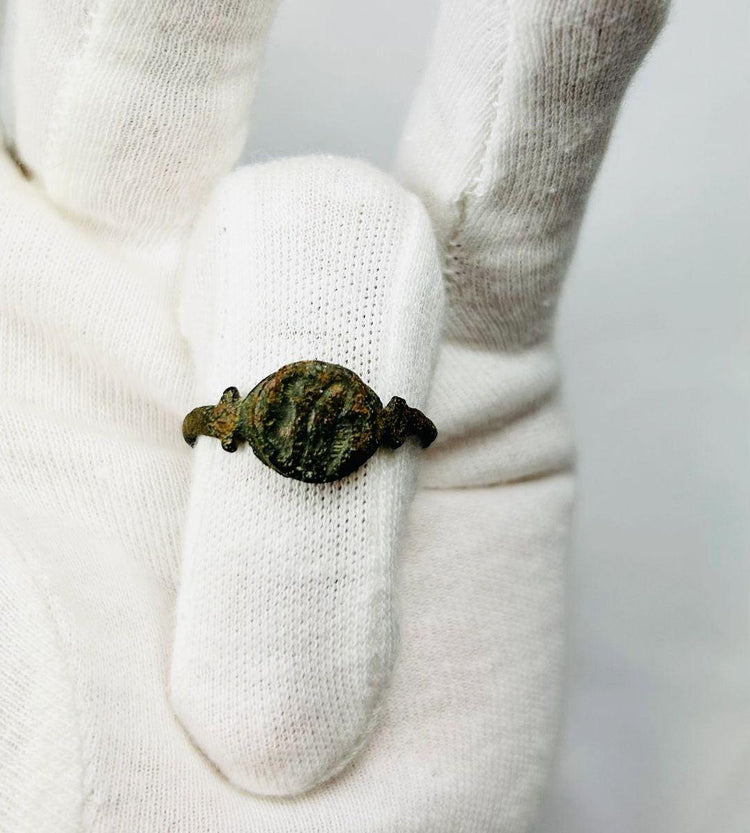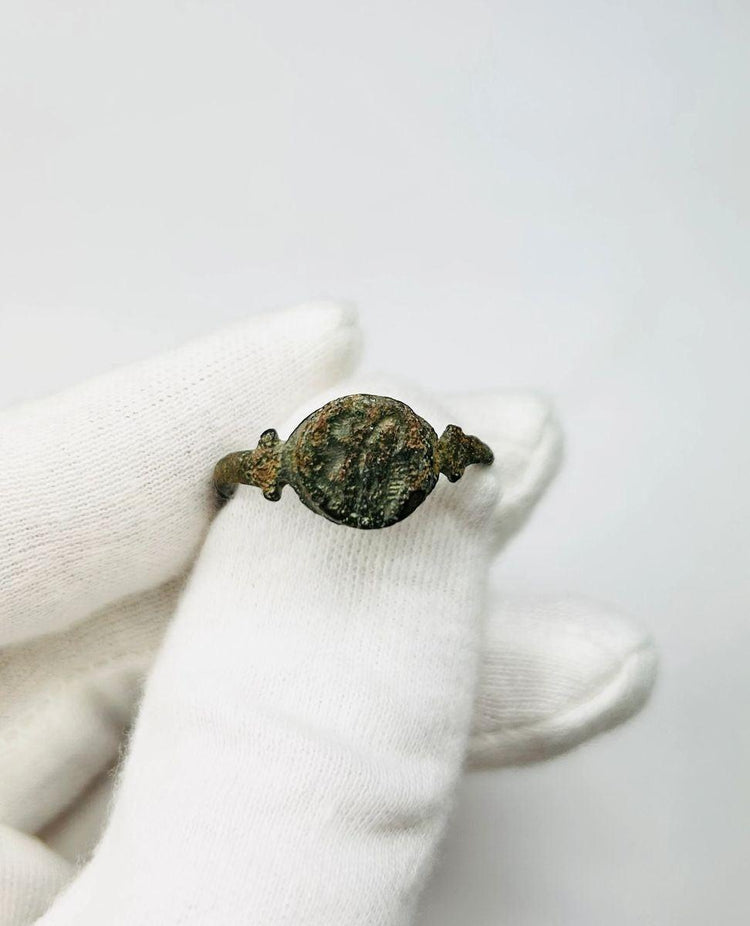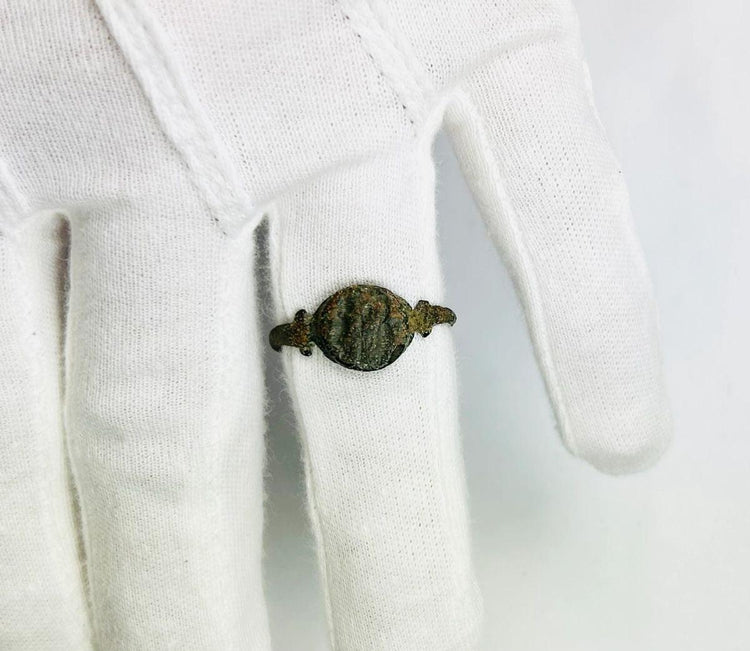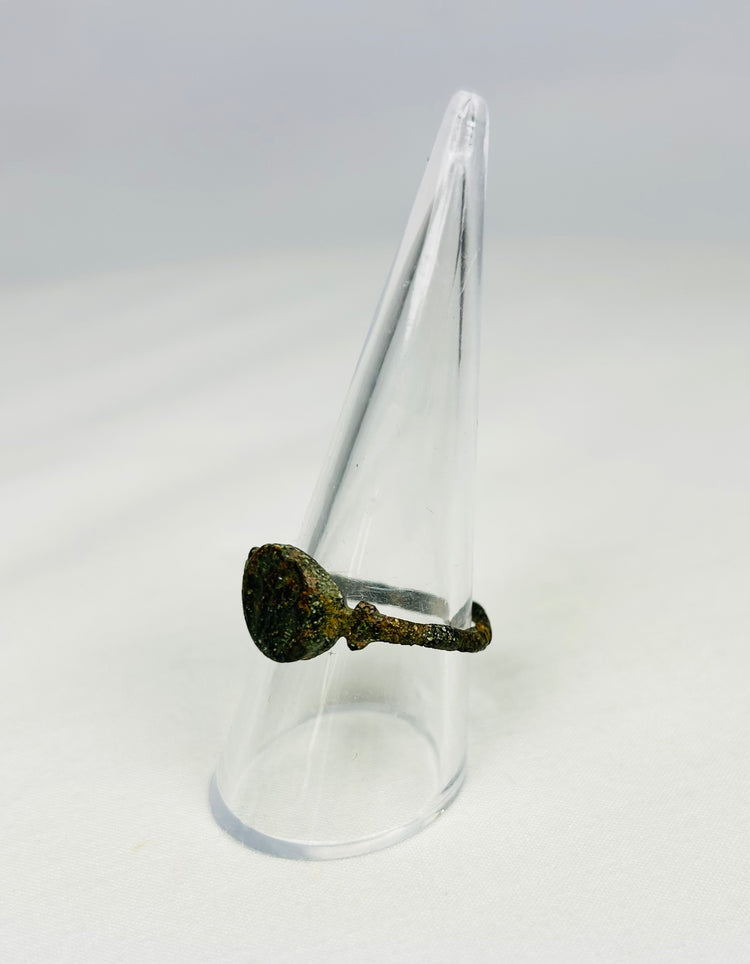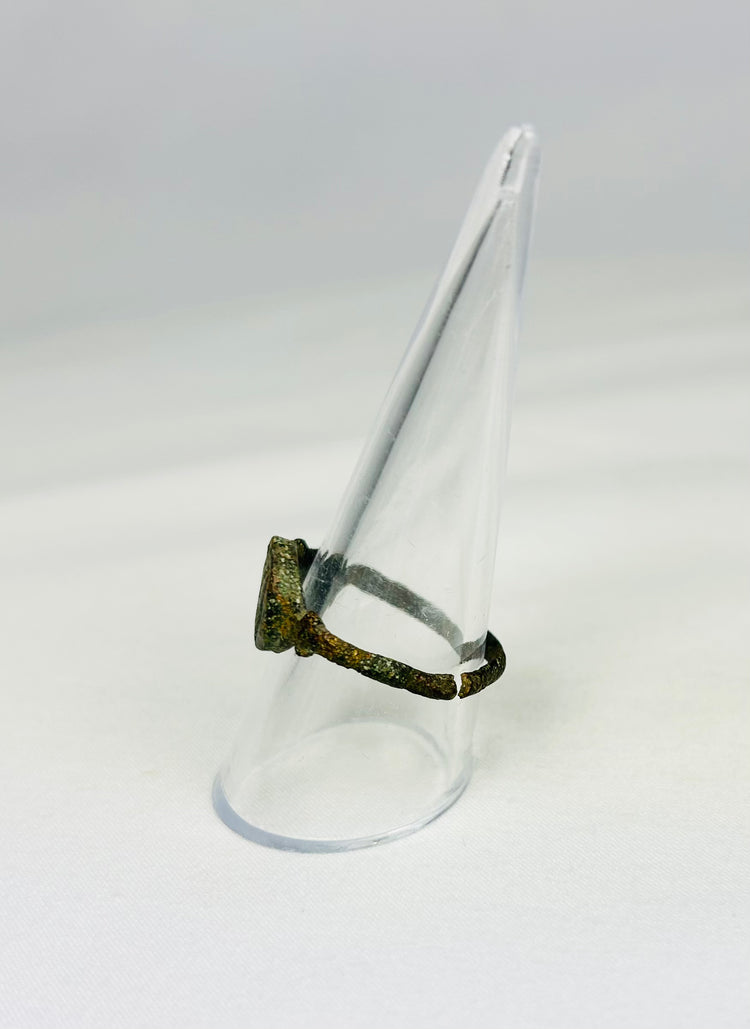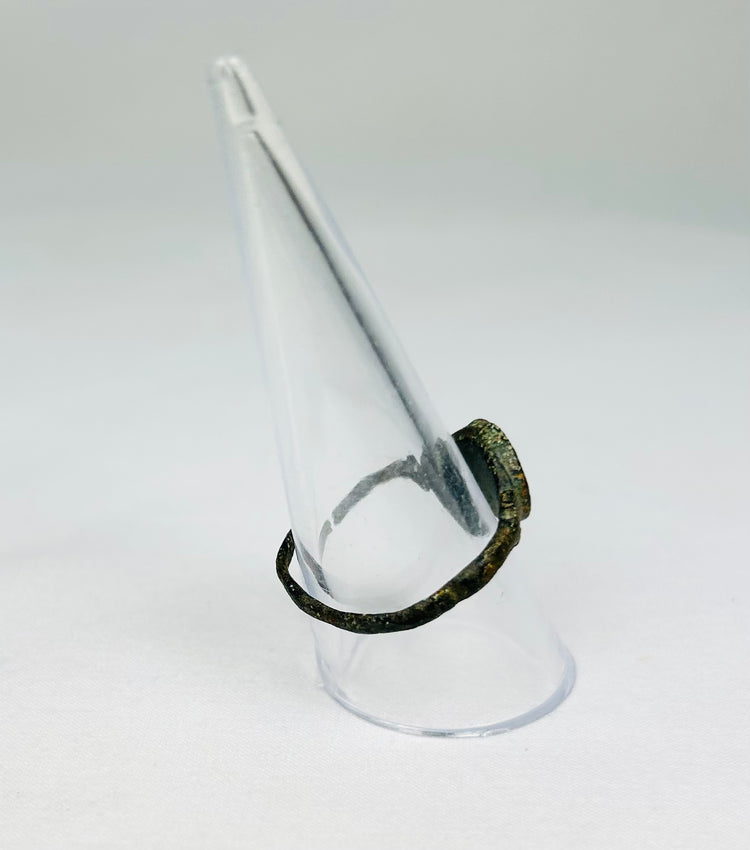Anillo de sello de bronce de la antigua Roma | Circa 150-250 d. C.
Descripción
Más
Menos
Contexto histórico y origen
Región: Imperio Romano (Mediterráneo)
Material: Bronce fundido con bisel grabado.
Periodo: Imperio romano, siglos I-III d. C.
Descripción
Este antiguo anillo de sello romano de bronce presenta un hipocampo finamente grabado: el mítico caballito de mar con cabeza y patas delanteras de caballo y cola de pez. El hipocampo estaba estrechamente asociado con Neptuno (Poseidón en la mitología griega), dios del mar, y simbolizaba la fuerza, la gracia y los misterios del océano. Este tipo de anillo servía tanto como adorno personal como práctico sello, utilizado para marcar documentos, propiedades o bienes con el emblema único de su propietario.
Características
- Bisel grabado que representa un hipocampo (caballito de mar mítico)
- Simbolismo ligado a Neptuno y al poder marítimo romano
- Bronce fundido con pátina desarrollada por el paso del tiempo.
- Diseño funcional pensado tanto como joya como sello.
Importancia cultural
En la cultura romana, los anillos de sello eran herramientas esenciales de identidad y autoridad, usados por funcionarios, comerciantes y élites para autenticar documentos y posesiones. La elección del hipocampo refleja la importancia del mar en el comercio, la expansión militar y la mitología romana, representando el poder divino y el dominio del imperio sobre el Mediterráneo. Dichas imágenes reforzaban tanto las creencias personales como la posición social.
Condición
El anillo presenta una rotura en la banda, algo común en los anillos de bronce antiguos, aunque el bisel y el diseño del hipocampo se conservan bien. La pátina de la superficie realza su antigüedad, conservando la integridad de las imágenes grabadas.
Dimensiones (aproximadas)
Talla del anillo: 9.5 EE. UU.
Edad
Siglo I-III d. C.
Descripción
Contexto histórico y origen
Región: Imperio Romano (Mediterráneo)
Material: Bronce fundido con bisel grabado.
Periodo: Imperio romano, siglos I-III d. C.
Descripción
Este antiguo anillo de sello romano de bronce presenta un hipocampo finamente grabado: el mítico caballito de mar con cabeza y patas delanteras de caballo y cola de pez. El hipocampo estaba estrechamente asociado con Neptuno (Poseidón en la mitología griega), dios del mar, y simbolizaba la fuerza, la gracia y los misterios del océano. Este tipo de anillo servía tanto como adorno personal como práctico sello, utilizado para marcar documentos, propiedades o bienes con el emblema único de su propietario.
Características
- Bisel grabado que representa un hipocampo (caballito de mar mítico)
- Simbolismo ligado a Neptuno y al poder marítimo romano
- Bronce fundido con pátina desarrollada por el paso del tiempo.
- Diseño funcional pensado tanto como joya como sello.
Importancia cultural
En la cultura romana, los anillos de sello eran herramientas esenciales de identidad y autoridad, usados por funcionarios, comerciantes y élites para autenticar documentos y posesiones. La elección del hipocampo refleja la importancia del mar en el comercio, la expansión militar y la mitología romana, representando el poder divino y el dominio del imperio sobre el Mediterráneo. Dichas imágenes reforzaban tanto las creencias personales como la posición social.
Condición
El anillo presenta una rotura en la banda, algo común en los anillos de bronce antiguos, aunque el bisel y el diseño del hipocampo se conservan bien. La pátina de la superficie realza su antigüedad, conservando la integridad de las imágenes grabadas.
Dimensiones (aproximadas)
Talla del anillo: 9.5 EE. UU.
Edad
Siglo I-III d. C.
También te puede interesar































